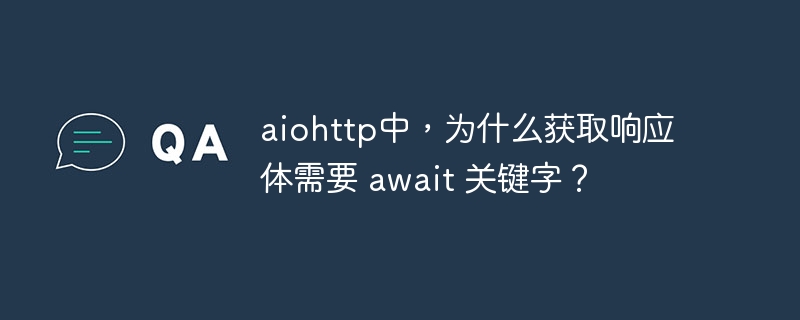
详解 aiohttp 中 response.text() 方法的异步特性
在使用 aiohttp 库进行网络请求时,获取响应体内容需要使用 response.text() 方法。 然而,这个方法并非同步执行,而是一个异步操作,因此必须配合 await 关键字使用。
这是因为 response.text() 方法实际操作的是一个流(streamreader 对象的子类),它代表着从网络连接中读取数据的过程。 这个过程并非立即完成,而是需要时间从服务器接收数据。 如果直接访问 response.text() 的结果,程序会试图访问一个未完成的流,从而导致 TypeError 异常。
await 关键字的作用是暂停当前协程的执行,直到 response.text() 方法完成数据读取。只有当数据读取完成后,await 才会继续执行后续代码,并将读取到的文本内容返回。
以下代码示例更清晰地展示了 await 的必要性:
import aiohttp
import asyncio
async def fetch_website_content(url):
async with aiohttp.ClientSession() as session:
async with session.get(url) as response:
# 必须使用 await 等待响应体读取完成
body = await response.text()
return body
async def main():
content = await fetch_website_content('http://example.com')
print(f"Website content (truncated): {content[:100]}") # 只打印前100个字符
if __name__ == '__main__':
asyncio.run(main())如果没有 await response.text(),程序将无法正确获取网页内容,并引发错误。 因此,在 aiohttp 中使用 await 来处理异步操作,特别是 response.text() 方法,是确保程序正确运行的关键。

每个人都需要一台速度更快、更稳定的 PC。随着时间的推移,垃圾文件、旧注册表数据和不必要的后台进程会占用资源并降低性能。幸运的是,许多工具可以让 Windows 保持平稳运行。

Copyright 2014-2025 https://www.php.cn/ All Rights Reserved | php.cn | 湘ICP备2023035733号